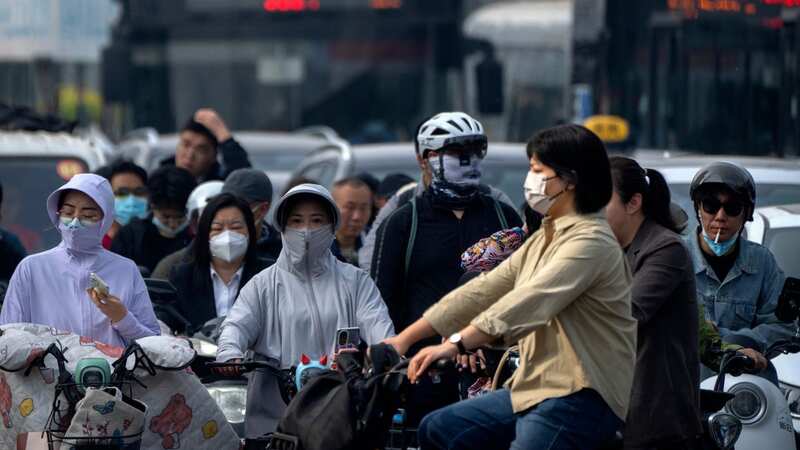China's new virus outbreak explained - the truth behind pneumonia-like disease
News has broken that a respiratory virus is surging in China which is raising concerns that the world is about to be swept by another devastating pandemic.
On 13 November, China's National Health Committee (NHC) announced a nationwide increase in cases of respiratory diseases, predominantly in children. Various media outlets then reported clusters of "undiagnosed pneumonia" among children in Northern China, particularly in Beijing and Liaoning province. The NHC called on local authorities to open more fever clinics and deliver vaccinations to children and the elderly amidst fears of further escalation.
An investigation by the World Health Organisation (WHO) has since managed to allay some of the understandable panic by identifying the reported increase in infections and hospitalisations as attributable to several known pathogens.
 Children are particularly affected by the new wave of respiratory illness (FeatureChina)
Children are particularly affected by the new wave of respiratory illness (FeatureChina)The known pathogens include the bacterium Mycoplasma pneumoniae , respiratory syncytial virus (RSV), adenoviruses and influenza. Only RSV, adenoviruses and influenza can give rise to viral pneumonia in severe cases.
"This is not an indication of a novel pathogen; this is expected," Maria Van Kherkhove, acting director of the WHO's department for epidemic and pandemic preparedness and prevention, told STAT News.
 Mum's heartbreak as 'best pal' daughter dies days after 'boozy birthday lunch'
Mum's heartbreak as 'best pal' daughter dies days after 'boozy birthday lunch'
She added that most countries faced an upsurge in respiratory illness "a year or two ago" when they began to lift restrictions on socialising. With its comparatively draconian approach to quarantining and testing, meanwhile, China only loosened COVID-19 curbs in 2022 – meaning children were sheltered for longer from infections and therefore have not yet acquired protective immunity against them.
Speaking to the Australian Science Media Centre (SMC), Dr. Ben Marais, director of the Sydney Infectious Diseases Institute at the University of Sydney, called this phenomenon an "immune deficit". Respiratory infections normally skyrocket in winter, too.
"This is a typical 'winter surge' in acute respiratory infections," Benjamin Cowling, professor of epidemiology at the University of Hong Kong, told Nature.
"It is happening slightly earlier this year, perhaps because of increased population susceptibility to respiratory infections resulting from three years of COVID measures," he said.
China also recently intensified its disease surveillance systems such that rising cases reflect not necessarily a genuine uptick but instead a more thorough method of detection.
Even countries with more liberal pandemic restrictions have reported similar waves of respiratory infections in children. According to the Center for Disease Control and Prevention (CDC), more people were hospitalised with flu in November 2022 than at any point since 2010.
The WHO is still urging a degree of vigilance, recommending that people in China get vaccinated where appropriate and maintain a safe distance from those known to be infected.
Read more similar news:
Comments:
comments powered by Disqus


































